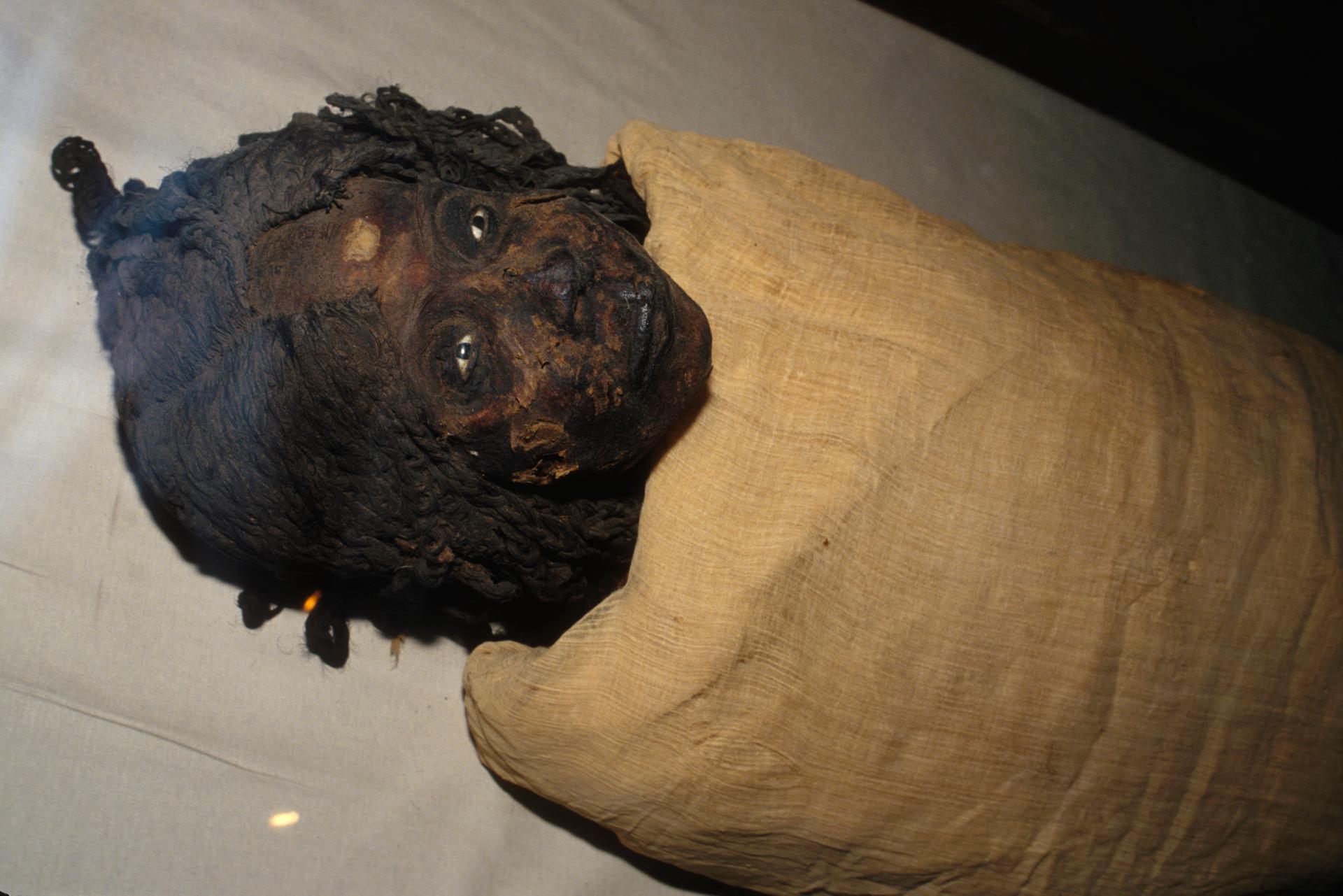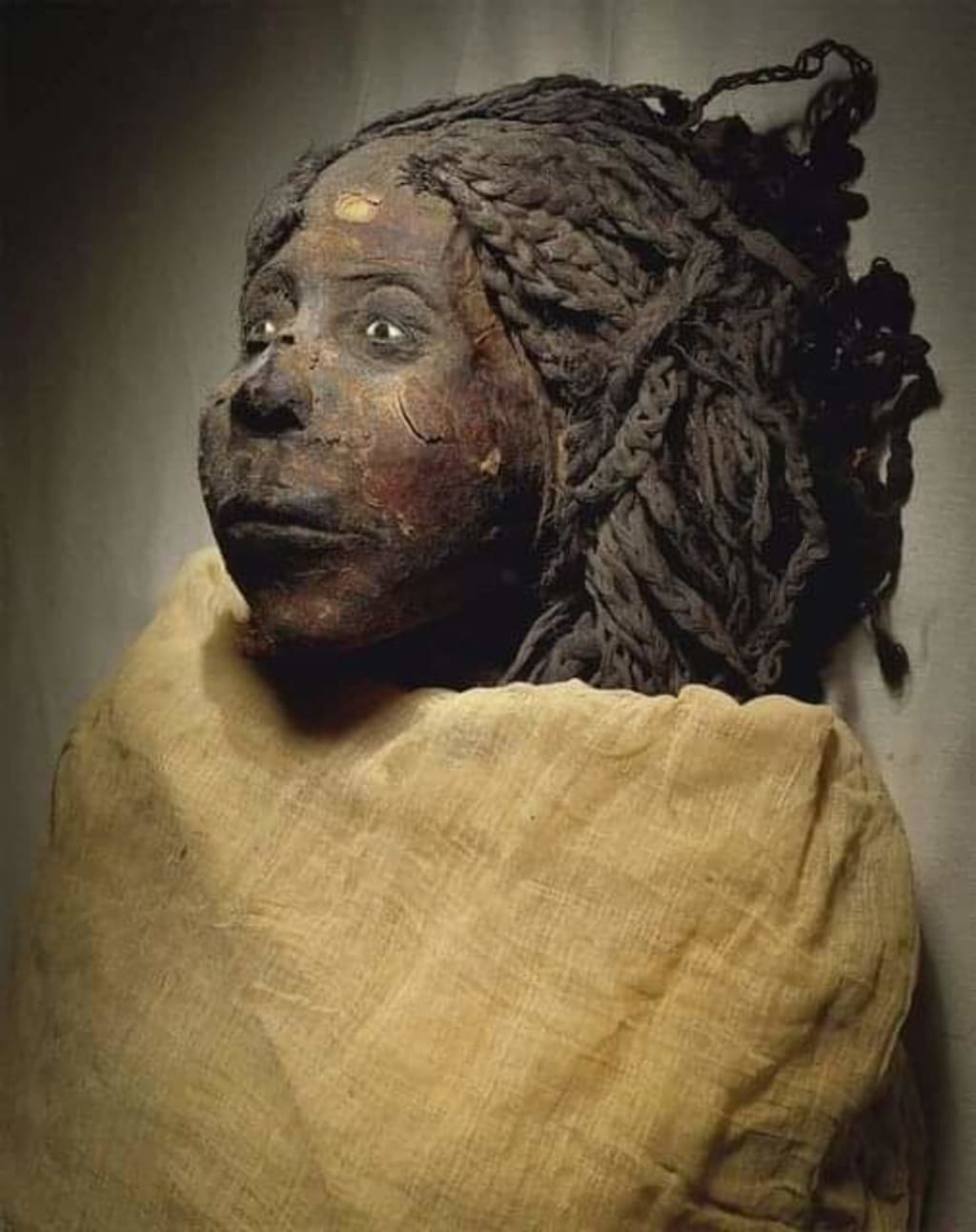The mummy of Queen Nodjmet, a prominent figure of Egypt’s 21st Dynasty (circa 1069–945 BCE), is a stunning artifact of ancient Egyptian culture and its meticulous funerary traditions. Found in the renowned Deir el-Bahari Cachette (TT320), Nodjmet’s remains share space with notable rulers and high-ranking officials, providing critical insights into the political and religious dynamics of her era.
Nodjmet’s Role and Historical Context
Queen Nodjmet is widely believed to have been the wife of Herihor, a High Priest of Amun who wielded significant power during the political fragmentation of late Ramesside Egypt. Her role as both queen and religious figure placed her at the intersection of governance and spirituality. Some accounts suggest she may have been connected to Piankh, another high priest, which highlights the intricate familial ties among Egypt’s elite during the Third Intermediate Period.

Although scholars debate her lineage, with some identifying her as the daughter of Ramesses X and Queen Tyti, her importance as a bridge between royal and religious authority is clear. Her life reflects a period of dynamic transformation in Egypt, marked by divided rule and a shifting emphasis on theocratic governance.
Innovations in Mummification
Nodjmet’s mummy demonstrates advanced mummification techniques of her time. Her preserved braided hairstyle, still visible after over 3,000 years, is a rare feature in ancient burials. This remarkable preservation reflects the high cultural value placed on individuality and beauty in the afterlife.

Artificial eyes made from stone and carefully crafted eyebrows of human hair enhanced her lifelike appearance. Embalmers used sawdust and resin to restore the body’s natural proportions and applied subtle facial coloring to achieve an idealized image. These meticulous efforts highlight the Egyptians’ belief in the necessity of presenting the deceased in their prime for the afterlife.
Her Funerary Ensemble
Nodjmet’s burial included an array of artifacts that showcased her royal status and ensured her readiness for eternity. Among the items found were:
- Shabti figurines to serve as her laborers in the afterlife.
- Canopic jars to store her preserved organs.
- A gilded wooden necklace symbolizing divine protection and authority.
Her coffin, adorned with depictions of protective goddesses Isis and Nephthys, further emphasized themes of mourning, protection, and rebirth.
The Significance of Hair
The preservation of Nodjmet’s braids is an extraordinary aspect of her mummy. Hairstyles in ancient Egypt symbolized identity, status, and spiritual beliefs. Nodjmet’s carefully maintained braids reflect the Egyptians’ respect for the deceased and their dedication to preserving personal identity even in death.

Nodjmet’s Enduring Legacy
The mummy of Queen Nodjmet remains a fascinating relic, offering a glimpse into the political, religious, and cultural richness of ancient Egypt. As a symbol of intricate funerary traditions and artistic achievement, her preserved remains continue to captivate historians and archaeologists alike.

